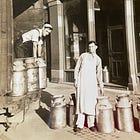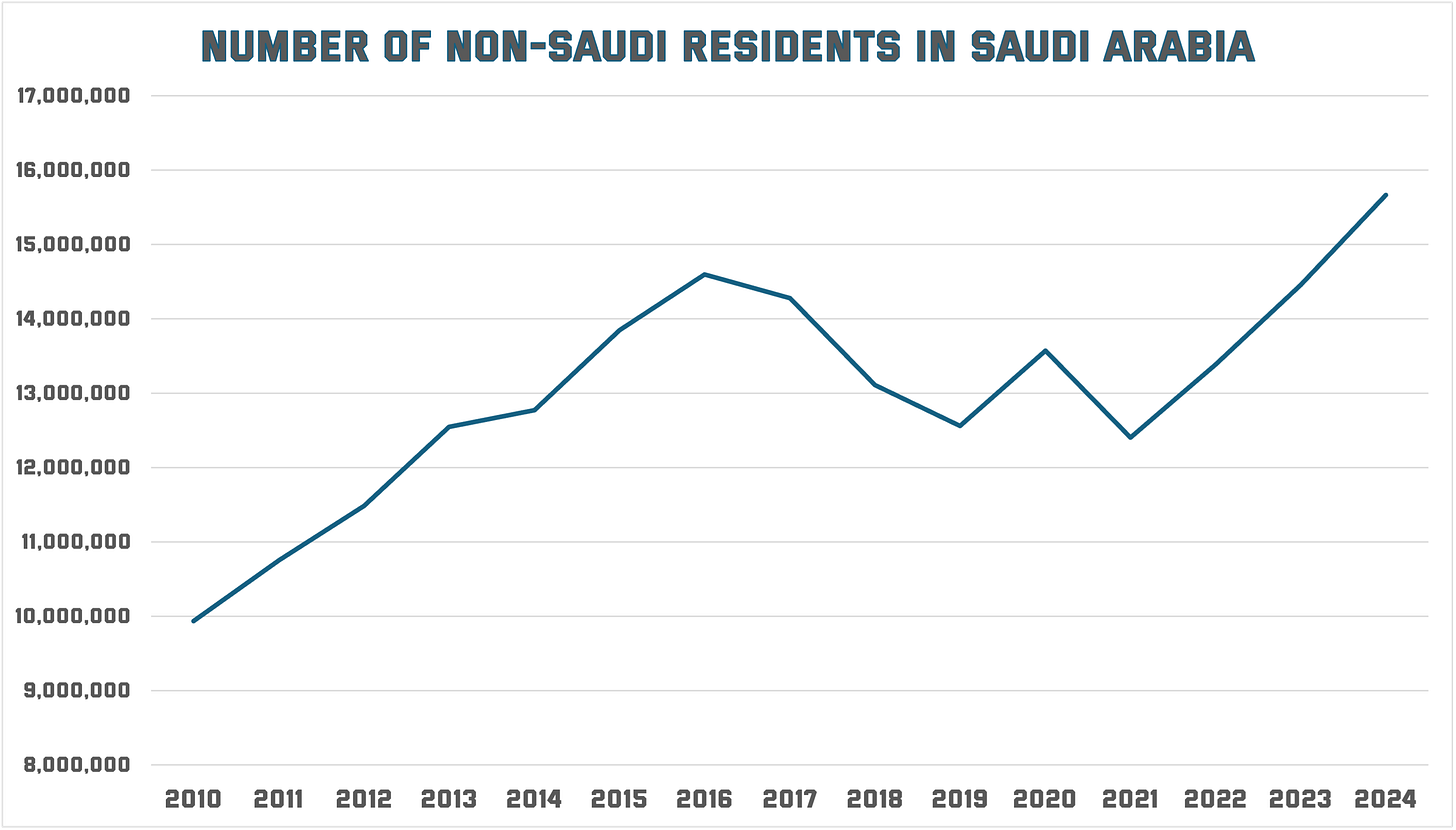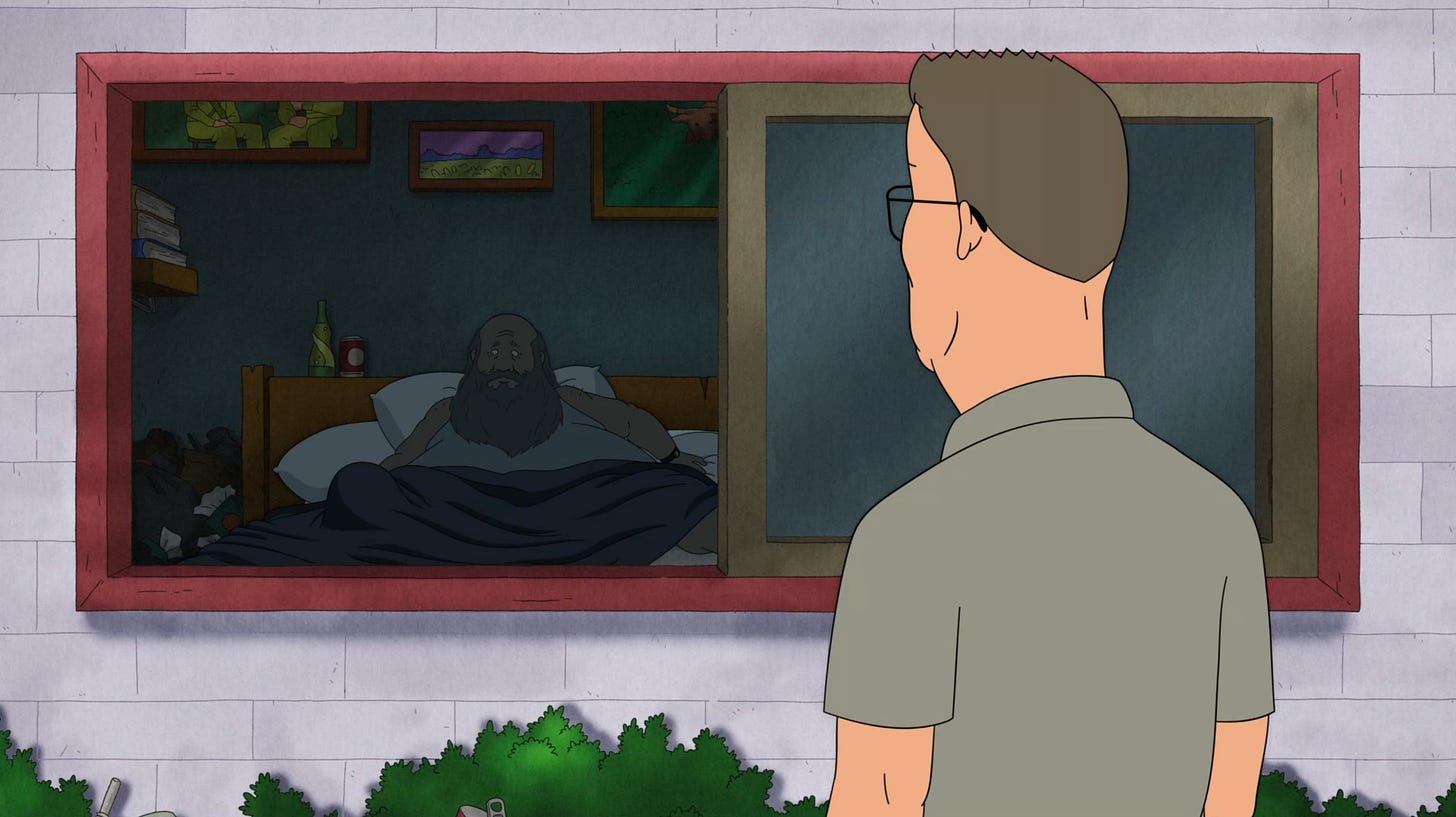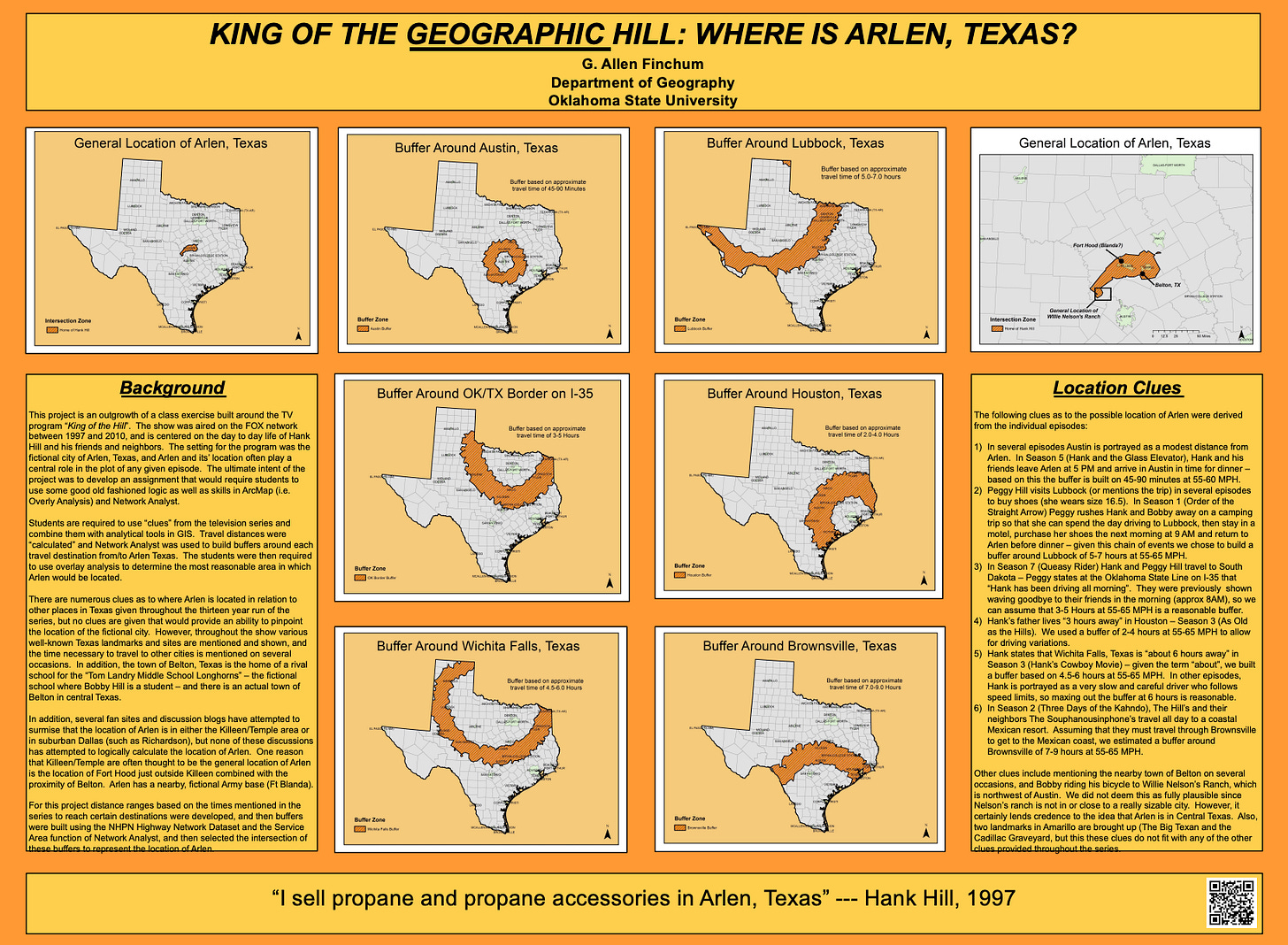The Urbanism of the 'King of the Hill' Reboot
The cartoon show about a family in a small Texas town has a lot to say about the urbanism of our society, especially after a 15 year hiatus. Part I.
King of the Hill first aired in early 1997 and ran for 13 seasons on Fox until 2010. What a run for the cartoon depicting life in a small Texas town. But everything is new again in the streaming era, so the beloved show got a reboot on Hulu in August 2025 for its 14th season.
In this article, I reflect on the reboot of the cartoon and its connection to real-world aspects of changing urbanism in the country. Be warned, I will be spoiling plot from the new season. But it is not some LOST mystery show, so you can probably follow and understand even if you have never even seen the show.
For a quick rundown, King of the Hill centers on Hank Hill (a propane and propane accessories salesman), his wife Peggy (a housewife, substitute teacher, and a kind of faux intellectual), and their doofy teenage son Bobby, along with a fun cast and crew that kept growing over the years to fill out the town.
Funny enough, Dale Gribble (Hank’s neighbor, childhood friend, and local town conspiracy theorist) has his own Substack in the reboot. He was always one of my favorite characters, so I think that’s a pretty good sign I should write this article. Or maybe that's what they want you to think.
Note: this is Part I of a two-part series. This part will focus on urbanism.
Stranger in His Own Land
A lot has changed in the US and Texas since the show ended in 2010, not to mention when it first aired in the late 90s. If you just time-traveled from 2010 to 2025, imagine how strange everything would be: Game show host president, global pandemic, smartphone inundation, just to name a few.
To grapple with these new developments in society, the main plot device for the King of the Hill reboot is that Hank and Peggy moved to Saudi Arabia for a few years. In the first episode, they are just moving back to the US and Texas. The couple is then confronted with all these new innovations, like Hank being confused by the social pressure to rate every rideshare 5 stars.
It is the TV trope stranger in a strange land, yet it is supposed to be Hank’s home. The reality of his situation is not fiction, though; it is a real sensation of returning home from living abroad called Reverse Culture Shock.
Craig Storti, author and intercultural communications expert, describes the feeling of Reverse Culture Shock in The Art of Coming Home (1997):
The strangeness of home is bound to be more alarming than the strangeness of overseas. You can accept that you are not going to fit in abroad in what is after all a foreign country, but the idea that you don’t fit in back home, where you are in all likelihood going to spend much, if not the rest, of your life, is deeply disturbing. If you don’t belong at home, then where do you belong?
Hank and Peggy are not alone in this feeling. I’ve seen studies that report anywhere from 50% to 90% of returning students or expatriates feel some sort of Reverse Culture Shock.
I certainly have felt this myself. Coming back from Italy as an undergrad, I would try to bike or walk everywhere in my autocentric college town. Or moving back to the US from South Korea, realizing I could just order food in English but also being annoyed by the reintroduction of tipping.
There were some criticisms about the Hills even going abroad in the first place. They thought the über-Texan and patriot Hank would never move abroad. I can see the critique, but the plot does track with real-life trends, as more Americans are at least visiting abroad since those early seasons.
When King of the Hill first aired in 1997, roughly less than 15% of Americans even had passports. This year, more than 50% of Americans now hold one. It is more realistic for Hank to even consider going abroad because it is more of a reality for Americans today.
In terms of working abroad as an expat, those numbers are a bit more difficult to find. A report by the Overseas Vote Foundation listed 3.7 million Americans living abroad in 1999. The Association of Americans Resident Overseas (AARO) cited that there were 5.5 million Americans living abroad in 2023. That’s only an increase from 1.36% of the total US population to 1.65% 23 years later. So fully moving abroad for work is still fairly rare.
In terms of Saudi Arabia, like much of the Gulf States, there has been an explosion of foreign workers in the country. Obviously, a large portion comes in the form of laborers, domestic workers, and other low-wage positions, including accusations of deplorable conditions.
Hank, on the other hand, could be counted as one of the more privileged expats in the region. These are high-wage workers with a high degree of agency. They often live in expat or international compounds that are more luxurious than those in the US. The show even depicted his Aramco compound as a kind of America Town. “This is what I imagine things were like in the 50s,” Hank says wistfully.
I think this is one of the key changes from the show that is relevant today. The standard of living around the world has rapidly caught up to the US and surpassed it in many ways. The cost of housing, street degradation (or lack thereof), public transit, and other amenities can easily be much better elsewhere. All of this is even more true for these kinds of expat packages that Hank has been offered.
Sprawling Friendship
Hank still comes home to the small Texas town of Arlen, where the entire original series took place. While Arlen is a classic American post-war development that necessitates driving everywhere, Hank was lucky to still have his good childhood buddies living next door.
The most unrealistic part of the entire original series is that Hank and his pals walk over to the alley pretty much every day to hang out, chat, and drink beer together. In real life, it is likely that one of Dale, Boomhauer, or Bill ends up moving away. Not necessarily out of Arlen, but to a far-flung corner of town. This would mean they simply would have less time to see each other, having to drive all the way just to nod and yep.
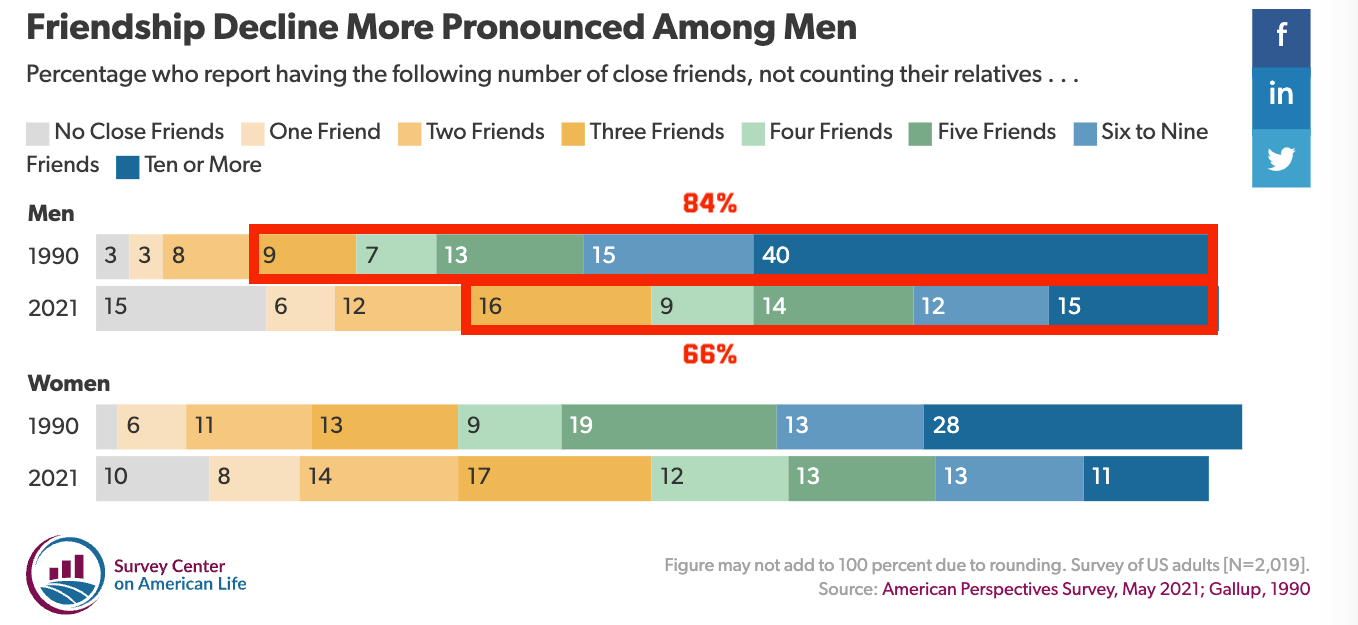
In 1990, 84% of men said they had at least three friends like Hank (that’s not even counting Kahn or other characters). By 2021, that had dropped to 66%, with a full 15% of men saying they had no close friends. This change is the male loneliness epidemic.
The problem was probably best represented by Bill in the reboot, who fell into a deep depression when Hank and Peggy left. He became a recluse in his filthy house and gained a lot of weight. It was played for laughs, but in reality, this is the kind of thing that can happen with fewdf friends, leading to an early death.
Interestingly, Peggy seems to be the one without as many close friends. She does have neighbor friends, Minh and Nancy, but they don’t spend time together daily like Hank’s crew. While we often hear about the male loneliness epidemic, it appears women have seen similar drops, which might be more akin to Peggy’s situation (which I will cover in Part II).
Becoming Dallas Metroplex
King of the Hill never reveals exactly where Arlen is, sort of like Springfield in The Simpsons, but just in Texas. There are plenty of guesses and fan theorization, though. One of my favorites comes from Professor G. Allen Finchum of Oklahoma State University.
At the onset of the show in the 1990s, Arlen is supposed to be more of an Anytown, Texas. Over the run of the series, the show uses Dallas more as a key plot location. But ultimately it’s supposed to be a small town, not a suburb (at least early on). Hence, Arlen is dealing with the Wal-Mart moving in (aka Mega Lo Mart) and putting the small businesses out of business.
In the rebooted series, Arlen definitely feels more like a Dallas suburb (or probably more like an exurb). It is clear that the metropolis of Dallas has slowly crept towards the Hills’ home. While this might have just been a plot device to keep Bobby and Connie nearby (as they move to Dallas—more in Part II), it is actually a realistic depiction of what has happened with the Dallas metroplex.
The Dallas–Fort Worth–Arlington metroplex is massive. It has become the fourth-largest metropolitan area in the country (at 7.5 million and growing!), depending on the calculation. The growth is so massive that the metro has even sprawled into Oklahoma, according to the US Office of Management and Budget (OMB). Just think, Hank shares the same market as the dreaded Sooner fans on the other side of the Red River.
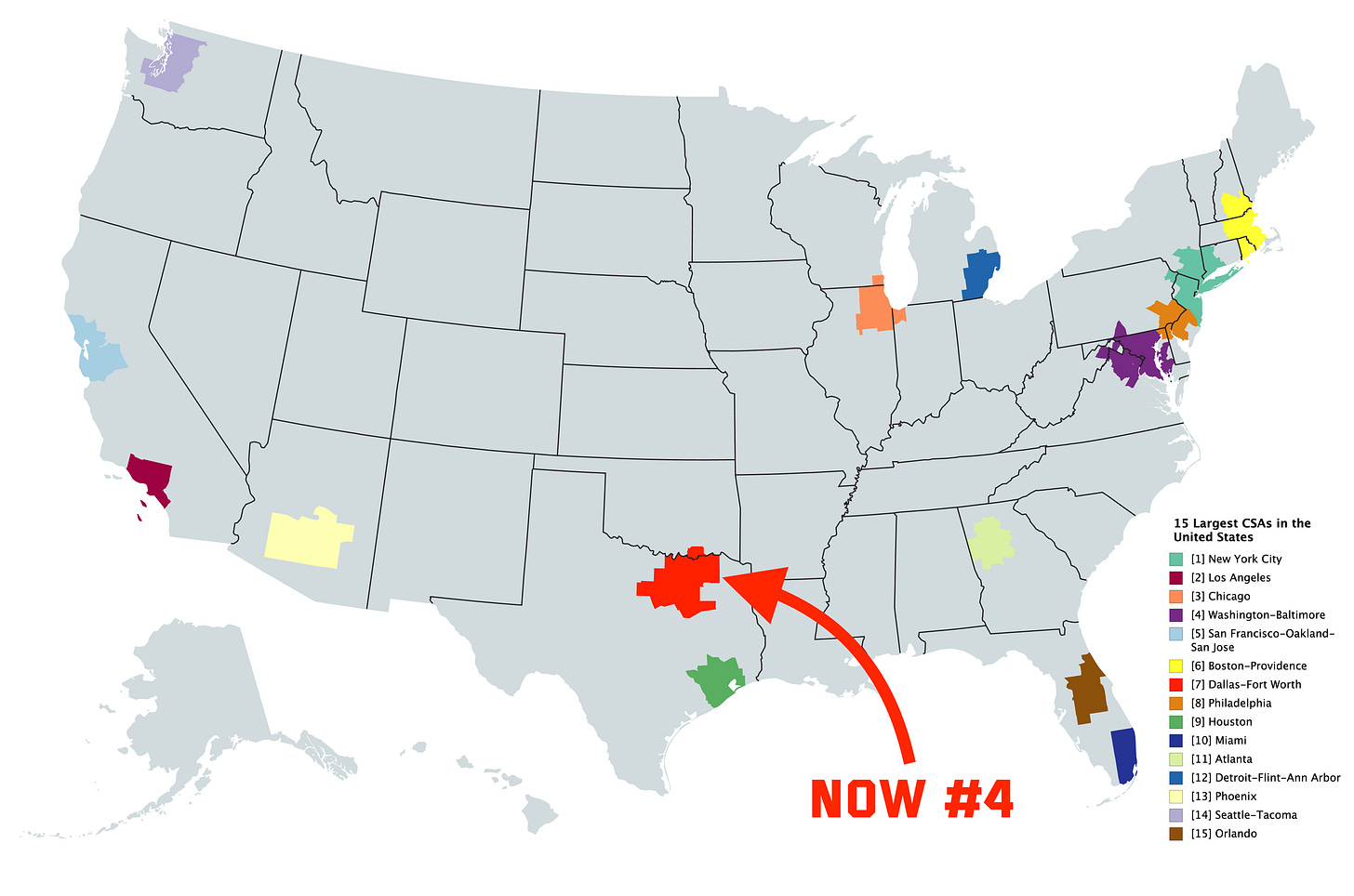
This means that the evolution of Arlen as a small isolated Texas town into a Dallas exurb is not just a TV show device. In real life, Arlen would have been swallowed up by the sprawling metro area. Changes come with that engulfing sprawl, including more housing, communities, residents, crowds, commuters, businesses, and, of course, traffic congestion.
One of my favorite parts of the entire reboot is just a short scene on road design. Hank is driving home from getting his old truck out of storage when he comes across a new street design near his house. It is a typical safe street redesign with typical traffic calming measures and bright orange flexipoles.
This certainly has made the street safer since cars must slow down and limit their movement. Hank is disgusted by the redesign, though. Even though I consider myself an urbanist, I feel Hank’s pain here! This kind of redesign is simply ugly.
In particular, those flexipoles still look like garbage even in animated form. I will have a full article on this one day, but I will just say now that flexipoles should not be used as a permanent installation. Yet, so often they are used permanently simply because they are cheap (read: ugly).
What this does is it creates an anathema to the entire project. The new design adds a minute to someone’s trip, but at the same time, it also looks terrible. That’s two strikes against the change. If the space actually looked nice—perhaps with local vernacular brass bollards and not junky plastic—then people like Hank would at least appreciate the aesthetic and beauty, even if still annoyed about no more U-turns.
Nonetheless, these are the kinds of changes expected when a small town becomes a suburb of a major city. It is also why Hank’s Reverse Culture Shock was even steeper than normal. Arlen has changed like the rest of the country, but even more so for a small Texas town. Luckily, despite the changes, Hank can still just walk to the alley for some beers with his old pals.
Note: Part II in this series will be released next week, mostly covering aspects of education, similar to my past Dazed & Confused article.




